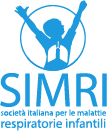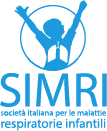Luigi Matera, MD, Dipartimento materno infantile e scienze urologiche, Sapienza Università di Roma
Cough is the symptom that most frequently leads to a medical consultation. Chronic cough in children is defined as a daily cough that lasts more than four weeks. It has a significant impact not only on the child’s quality of life, affecting sleep and school performance, but also on the entire family, causing anxiety and concern and representing a major source of frustration for parents.
What is Protracted Bacterial Bronchitis?
Protracted bacterial bronchitis (PBB) is a condition typically seen in childhood, clinically defined by the presence of a wet cough lasting more than four weeks, resolution of the cough with antibiotic therapy, and the absence of symptoms and/or signs suggestive of another cause of chronic cough (the so-called “cough pointers”). These include chest pain, a history suggestive of foreign body aspiration, dyspnea, exertional dyspnea, hemoptysis, growth failure, feeding difficulties (including choking/vomiting), cardiac or neurocognitive developmental abnormalities, recurrent lung infections, immunodeficiencies, epidemiological risk factors for tuberculosis, signs of respiratory distress, digital clubbing, chest wall deformities, crackles on chest auscultation, chest X-ray abnormalities, and pulmonary function abnormalities. The condition is caused by colonization and persistence of microorganisms in the bronchus, which lead to a state of inflammation; if left untreated, this can result in progressive damage to the bronchial walls over time.
The most common causative microorganisms are Haemophilus influenzae, Streptococcus pneumoniae, and Moraxella catarrhalis. These bacteria form a polymicrobial structure known as a biofilm, within which they replicate and are protected from the host’s immune defenses and the effects of antibiotics.
How common is PBB and who contracts it?
Although the exact prevalence of this condition is not well known, studies conducted in Australia and Turkey have diagnosed PBB in between 11% and 41% of children referred for chronic cough to a tertiary pediatric pulmonology center. While it can occur at any age (including adulthood), the majority of affected children are under 6 years old (with a mean age ranging from 1.8 to 4.8 years). In addition, PBB is more common in males. Transmission occurs through airborne droplets.
What are the symptoms of PBB?
By definition, patients with PBB present with a chronic wet cough without systemic symptoms; growth and development are normal, and there are no signs of chronic suppurative lung disease. Children do not have fever. Since PBB is often mistaken for asthma, children are frequently misdiagnosed and treated with salbutamol and inhaled corticosteroids. Sometimes, it may appear that antibiotic therapy has not been effective, which can make a diagnosis of PBB seem unlikely; however, upon closer investigation, it often becomes clear that there was an initial improvement with the introduction of antibiotics, followed by a rapid recurrence of symptoms after the treatment was stopped. In fact, a 5–7 day course of antibiotics is insufficient and is typically associated with initial clinical improvement followed by a relapse of the cough.
How is PBB diagnosed?
The diagnosis is clinical and it is based on the presence of isolated persistent wet cough that resolves with appropriate antibiotic therapy, with no identifiable alternative causes. Chest X-ray and spirometry are generally normal; however, chest X-rays may occasionally show peribronchial changes.
What are the other causes of chronic productive cough?
Other causes of chronic wet or productive cough in children include: pertussis, tuberculosis, foreign body aspiration, bronchiectasis, cystic fibrosis, aspiration, or congenital lung lesions. Most of these conditions are associated with additional symptoms and signs (cough pointers). Further investigations are recommended when cough pointers are present or when the cough does not respond to four weeks of antibiotic therapy.
Who is at risk of permanent outcomes?
Diagnosis is particularly important because, if left untreated, this condition can lead to permanent lung damage (bronchiectasis). Recent studies have shown that the main risk factors for progression to bronchiectasis are lower airway infections caused by Haemophilus influenzae and recurrent episodes of PBB.
What is the treatment for PBB?
In PBB antibiotic treatment should be initiated as early as possible to achieve prompt and lasting resolution of the cough and to prevent bronchial damage. Treatment is based on prolonged oral antibiotic therapy, typically lasting at least two weeks. The goal of therapy is to eradicate the infection and restore epithelial integrity. If treatment is started empirically, amoxicillin-clavulanate is the most commonly used antibiotic. Once microbiological test results are available, antibiotic therapy can be adjusted based on the sensitivity of the isolated microorganism. When amoxicillin-clavulanate cannot be used, macrolides or cephalosporins are considered second-line options. Regarding duration, most studies suggest that a two-week course of an antibiotic effective against the most common causative agents, is usually sufficient to resolve the cough.
No metadata found.



